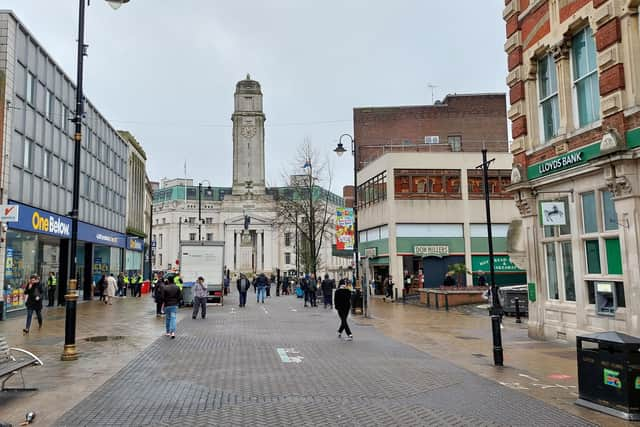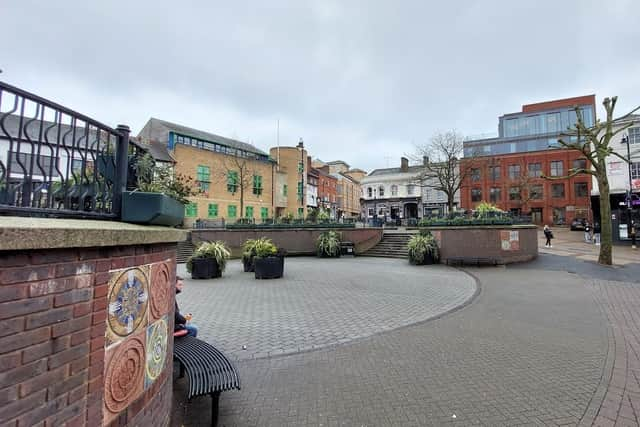Luton’s historic George Street is in critical condition say heritage watchdogs
and live on Freeview channel 276
Luton’s historic George Street is at risk according to Historic England.
The town’s high street has a staggering 35 Grade II listed buildings, along with the town hall which is Grade II.
Advertisement
Advertisement
But in its latest report on Heritage at Risk, Historic England says many of the 19th and 20th Century buildings are now in a poor state, the street lacks a clear function and the ring road has exacerbated issues.


The report, out today (Thursday, November 10), says: “George Street features a formerly fine collection of 19th and early 20th Century commercial and entertainment buildings, and is bookended by the impressive Art Deco town hall to the northwest and the area of Market Hill to the southeast.
“In the 19th Century, the area was occupied by a wide range of businesses and was at the heart of the hat making industry. Its role shifted over time to predominantly retail, but the nearby shopping mall competes successfully for retail footfall and creates a barrier between George Street and Plaiters’ Lea.
“Many of the surviving buildings are now in poor condition, the street lacks a clear function and purpose and is hampered by the physical barrier of the ring road. Revitalising George Street and helping it evolve to meet the needs of a contemporary town centre is critical to the future of this characterful street, and to revitalising Luton’s distinctive town centre heritage.”
Advertisement
Advertisement
Over the past year, 21 historic buildings and sites have been added to the Register in the East of England because of their deteriorating condition and 39 sites have been saved and their futures secured.


Many have been rescued thanks to heritage partners and dedicated teams of volunteers, community groups, charities, owners and councils, working together with Historic England.
Historic England awarded £1.08 million in repair grants to 28 historic places and sites, including conservation areas, on the Heritage at Risk Register in the East of England over the past year. Three historic places at risk have together benefited from close to half a million in grants from the heritage at risk strand of the Culture Recovery Fund during 2021/2022.
Twenty-one sites in the East of England have been added to the Register because of concerns about their condition.
Advertisement
Advertisement
Tony Calladine, East of England Regional Director, Historic England said: “It is central to Historic England’s mission that we pass on to future generations the rich legacy of historic buildings and places that we have inherited from previous generations. They tell the story of who we all are, they enrich our day to day lives and support sustainable economic growth, and we are coming to see how they can help in our struggle with climate change. With the help of local communities and partners, imaginative thinking and business planning, we can bring historic places back to life in the East of England.”
“As the threat of climate change grows, the reuse and the sensitive upgrading of historic buildings and places becomes ever more important. Finding new uses for buildings and sites rescued from the Register avoids the high carbon emissions associated with demolishing structures and building new”.
A spokesman for Luton Council said: "We are pleased the report recognises the historic significance of the George St area of town. The council has significant plans to regenerate the town centre and we are working proactively with developers and formulating a strategy that delivers the best solution and ensures both the character of the street and its function within the economy of Luton remain important."
Full details of the council's heritage strategy can be seen here.
Luton Heritage Forum was approached for comment, but has not yet responded.
